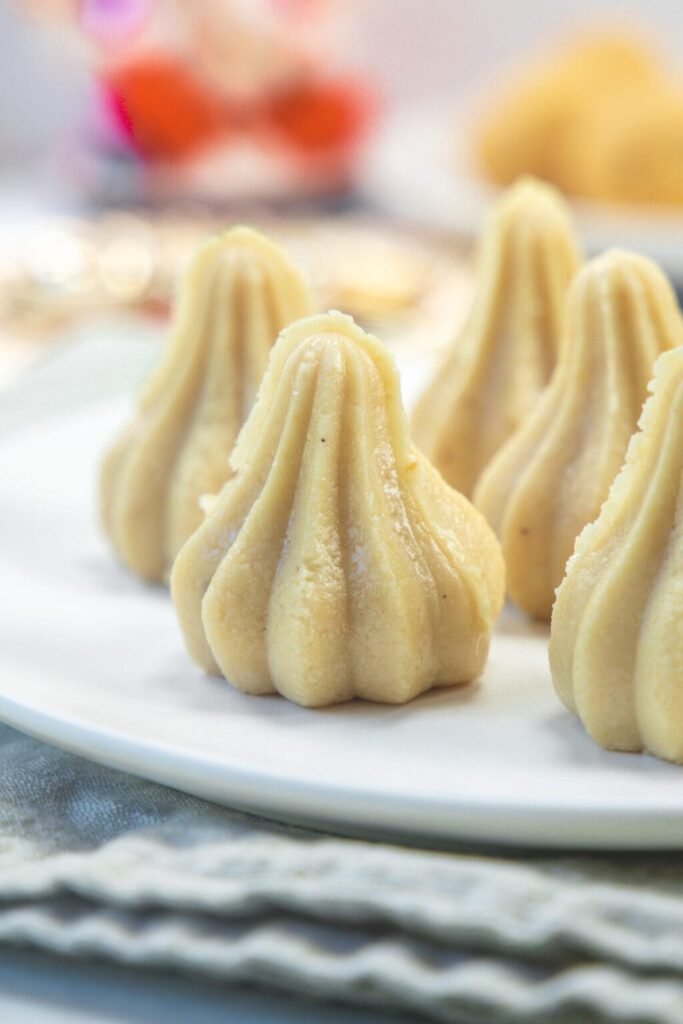This kaju modak is a quick and delightful sweet, ideal for offering to Lord Ganesha during Ganesh Chaturthi celebrations. Crafted using just four essential ingredients plus water, it gives a festive twist to the classic kaju katli by shaping it into the traditional modak form, perfect for prasad and festive gatherings alike. If you’ve made kaju katli before, you’ll find this recipe even more enjoyable, and if you’re a beginner, this is a great place to start!
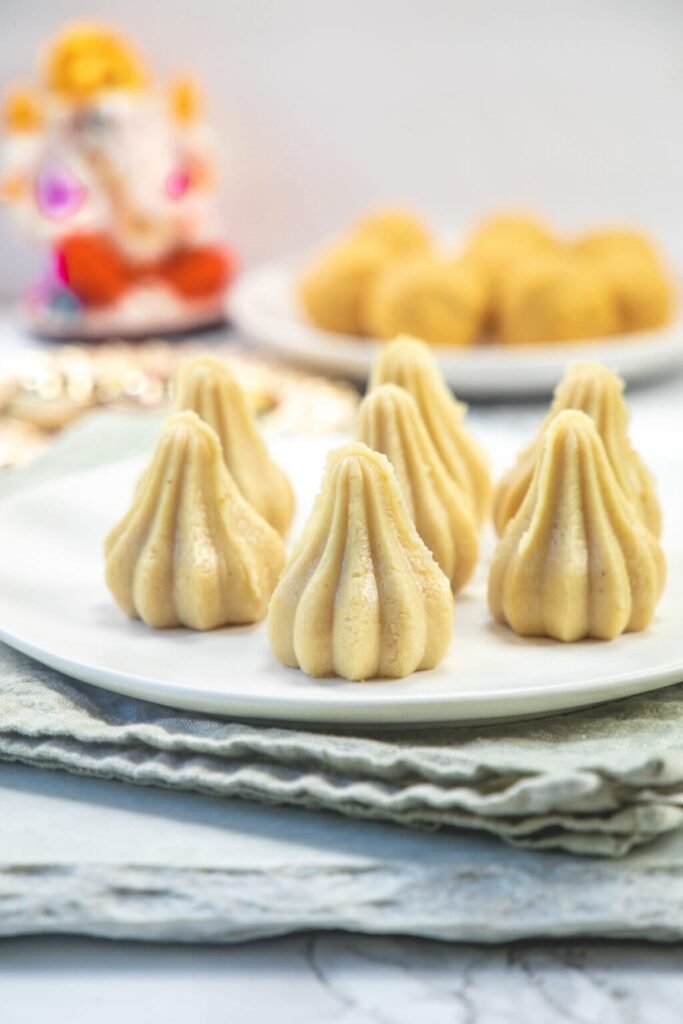
The process is simple and beginner-friendly, with no complex steps or time-consuming cooking involved. All you need is cashew powder, sugar, a touch of ghee, and a dash of cardamom for flavor. The mixture comes together easily into a smooth dough with a simple sugar syrup base, making it quick and beginner-friendly. After a short cooling time, it’s shaped into classic modaks with a mould, giving it a festive and traditional touch.
Not only is this sweet visually appealing, but it also melts in your mouth with every bite. The luxurious taste of cashews paired with the delicate, sweet aroma of cardamom creates an irresistible, melt-in-the-mouth treat perfect for festive occasions. And since it doesn’t involve any deep frying or stuffing, it’s much quicker and lighter than traditional stuffed modaks.
Whether you’re new to Indian sweets or just want to try something different this festive season, kaju modak is a wonderful choice. It’s also a great edible gift for family and friends during Ganpati celebrations.
Serve it as naivedya (offering) during puja or enjoy it as a post-meal treat—it’s sure to become a new favorite during festival time!
About This Kaju Modak Recipe
This Kaju Modak is a quick, delicious sweet treat that’s ideal for Ganesh Chaturthi or any festive celebration. Requiring just 20 minutes in total—10 minutes for cooking and another 10 for shaping—this recipe is perfect for those looking for an easy yet elegant dessert without spending hours in the kitchen.
What makes this sweet even more appealing is that it doesn’t require any advanced skills or complicated techniques. If you’ve got a modak mould, shaping them becomes effortless and gives that beautiful temple-style look. But if you don’t have one, don’t worry—this versatile mixture can easily be rolled into pedas or small ladoos. Either way, the result is a delightful sweet that’s sure to impress.
Made with just a handful of ingredients—cashew powder, sugar, a dash of ghee, and a touch of cardamom—this kaju modak carries the same luxurious flavor and soft, melt-in-the-mouth texture as the classic kaju katli. The sugar syrup is cooked just enough to bind the cashew powder into a smooth dough, which is then gently shaped while still warm.
Each bite is rich, nutty, and delicately aromatic, thanks to the natural flavors of cashews and cardamom. It’s a pure, fuss-free indulgence that appeals to kids and adults alike.
Whether you’re making it for bhog (offering) or gifting it to loved ones, this homemade kaju modak stands out for its simplicity, elegance, and traditional charm.
Ingredient Notes:
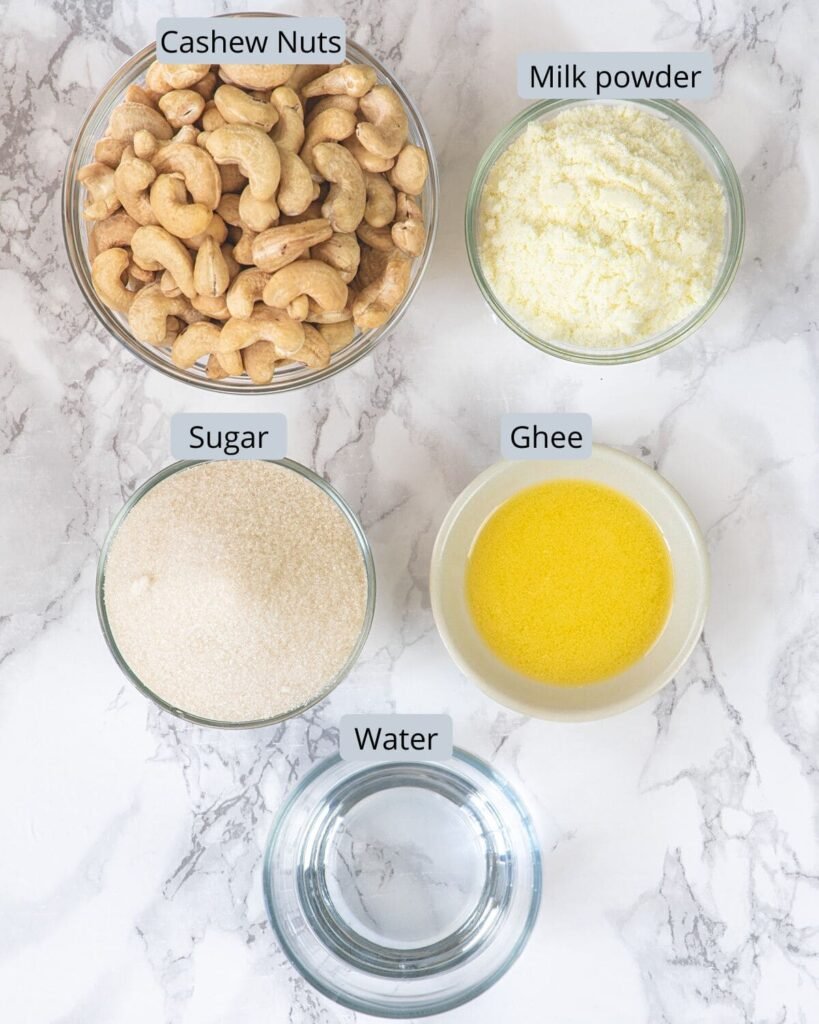
- Cashews: Use fresh, room-temperature cashews. If you’ve been storing them in the fridge or freezer, bring them to room temp before grinding. Cold or damp cashews can turn pasty when ground, which will affect the texture of your dough. Grind them in short pulses to a fine powder—do not over-blend or they may release oil and turn into cashew butter.
- Milk Powder (Optional): Full-fat milk powder, like the kind sold in Indian grocery stores, gives the modaks a richer and creamier texture. Avoid non-fat milk powder found in Western supermarkets, as it makes the mixture dry and crumbly. While not essential, adding milk powder enhances the soft, melt-in-the-mouth feel of your modaks.
- Sugar: Use fine white sugar or grind granulated sugar to a powder before making the syrup. This helps it dissolve evenly. The sugar syrup should reach a one-string consistency—not too thick or too watery. Stir the mixture gently over low heat until it reaches one-string consistency—when a drop of syrup stretched between two fingers forms a thin, single thread.
- Water: Only a little water is needed to dissolve the sugar and achieve the perfect syrup consistency. Avoid adding too much water or ghee, as it can prevent the dough from binding and forming the right texture for shaping. Always use clean, filtered water.
- Ghee: Grease your palms and the modak mould lightly with a few drops of ghee to keep the mixture from sticking while shaping. This prevents the dough from sticking and helps you shape the modaks smoothly. Ghee also adds a subtle richness and aroma to the final product.
How To Make Kaju Modak?
1) Place whole cashew nuts in a food processor or high-speed mixer jar.
2) Pulse them gently in intervals until you get a fine, dry powder. Be cautious not to grind continuously, as that generates heat, causing the nuts to release their natural oil. This will turn the mixture sticky and pasty—we want a dry texture.
3) Incorporate full-fat milk powder into the cashew powder and mix well to ensure a uniform blend. Using full-cream milk powder enhances the richness and texture, giving the modak a soft, melt-in-the-mouth feel.
4) Pulse again just once or twice to mix the powders evenly. Set this aside for now.
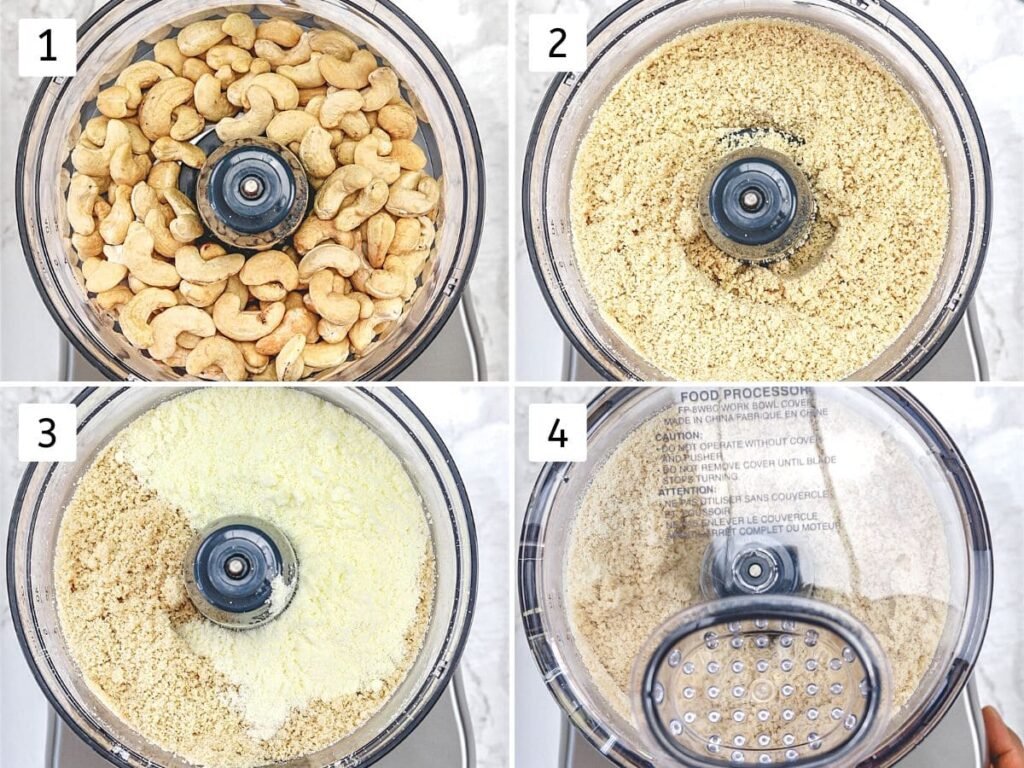
5) In a heavy-bottomed pan or non-stick kadhai, combine sugar and water.
6) Turn the heat to medium and stir until the sugar dissolves completely.
7) Allow the syrup to simmer and cook until it reaches a one-string consistency (known as ek taar chasni in Hindi).
You may use a candy thermometer to check the syrup’s temperature accurately. This helps ensure it reaches the ideal consistency for perfect modaks. It should reach 220°F (104°C). Once this is achieved, immediately turn off the flame.
8) To check the one-string consistency without a thermometer: Take a small drop of syrup on a plate and cool slightly. Then press a drop of the syrup between your thumb and index finger to check its consistency. A thin string should form and stay intact briefly. Gently separate them—you should see a thin string form that doesn’t break right away. If it breaks quickly, cook the syrup for a few seconds more and recheck.
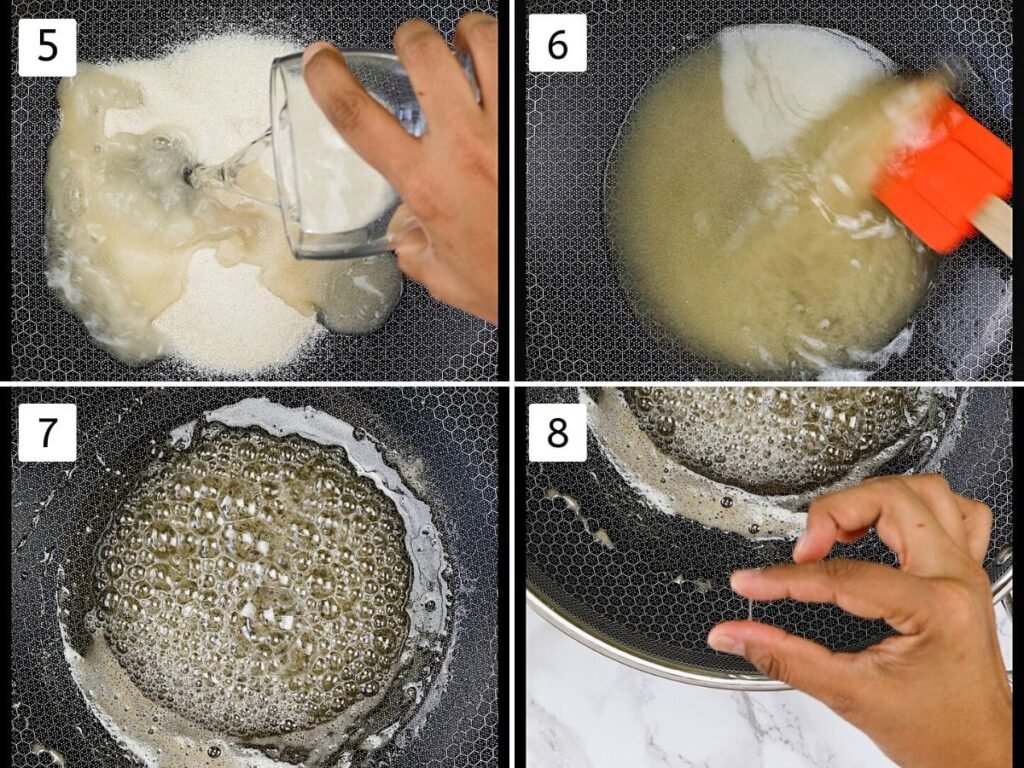
9) Add the prepared cashew-milk powder mixture into the hot syrup.
10) Stir quickly and cook on low heat, stirring continuously for about 2 minutes, or until the mixture thickens.

11) Add a teaspoon of ghee and mix thoroughly.
12) Continue stirring until the mixture starts to leave the sides of the pan. It may still appear soft and slightly sticky—that’s normal, as it will firm up while cooling.
13) Transfer the mixture onto a parchment paper-lined plate or greased surface. Allow it to cool down slightly so it’s safe to handle but still pliable.
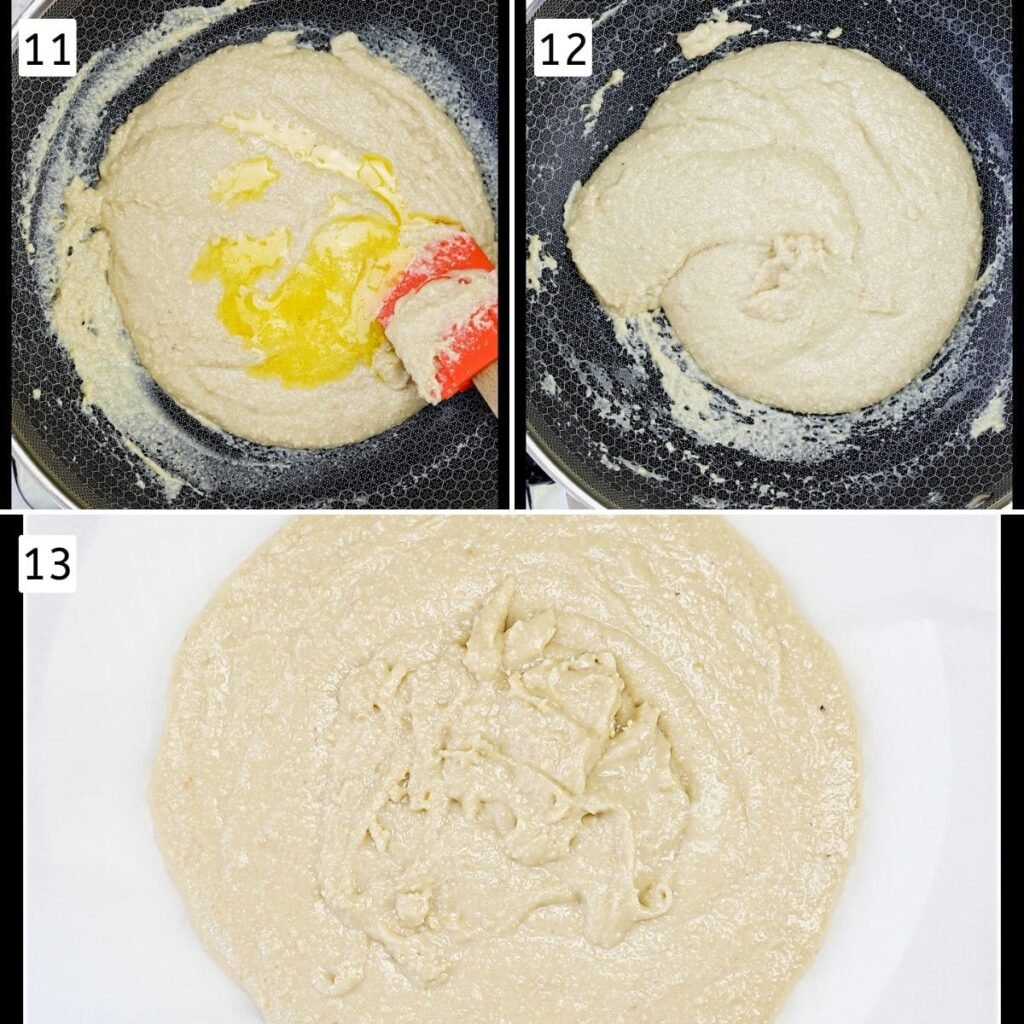
Shaping the Modaks:
1) Lightly grease your palms and the inside of the modak mould using a few drops of ghee to prevent sticking.
2) Take a small portion of the mixture (around 2 tablespoons, depending on mould size), roll it into a smooth ball.
3) Place this dough ball into the mould, pressing gently.
4) Close the mould tightly and smooth out the excess dough from the edges and bottom.
5) Open the mould carefully and release the shaped modak.
6) Place the shaped modak gently on a plate and continue the same process with the rest of the dough until all are done.
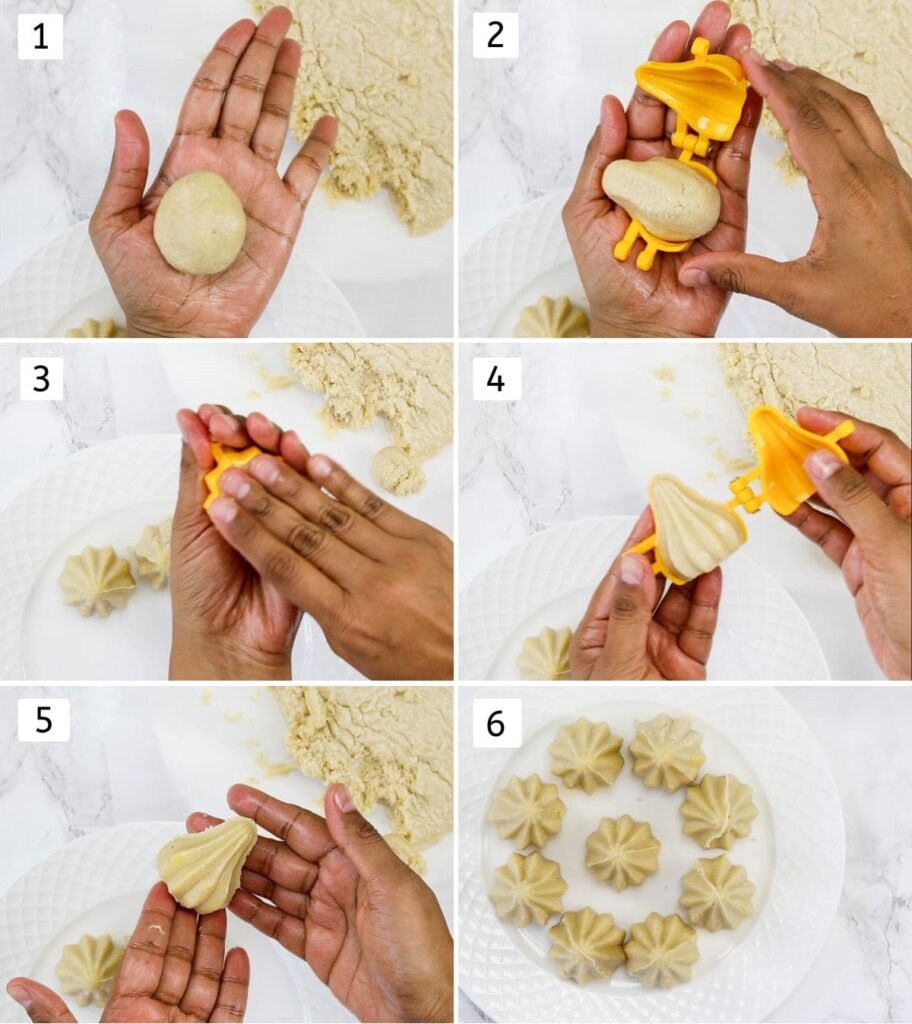
Expert Tips For Kaju Modak:
- Grind Cashews Carefully: Use the pulse function of your food processor to grind the cashew nuts. Avoid running it continuously—over-processing will release the natural oils, making the mixture moist and sticky. You’re aiming for a dry, powdered texture, not a paste.
- Texture Matters: Don’t stress about achieving a super fine powder. A slightly coarse texture—similar to fine semolina—is absolutely acceptable and won’t affect the final outcome.
- Use a Food Processor: A dry grinder or food processor works best for grinding cashews. Ensure the cashews are at room temperature before grinding, especially if stored in the fridge.
- Check Sugar Syrup Consistency: Getting the syrup to one-string consistency is critical. If undercooked, the mixture won’t set and will remain too loose to shape. Check the syrup by letting a drop cool slightly, then press it between your thumb and index finger—if a thin thread forms as you pull them apart, it’s ready. If a single thread forms without breaking, it’s perfect.
- Flavor It Right: Enhance the flavor of your kaju modak by adding a touch of cardamom powder once the cashew mixture thickens. For an added aromatic touch, you can enhance the flavor with a few drops of rose water or a sprinkle of finely crushed dried rose petals. These give a floral note and make your modaks extra festive.
- Grease Your Tools: Lightly grease your palms and the inside of the modak mould with ghee. This helps prevent the mixture from sticking and allows for smooth, well-defined shapes when molding the modaks.
